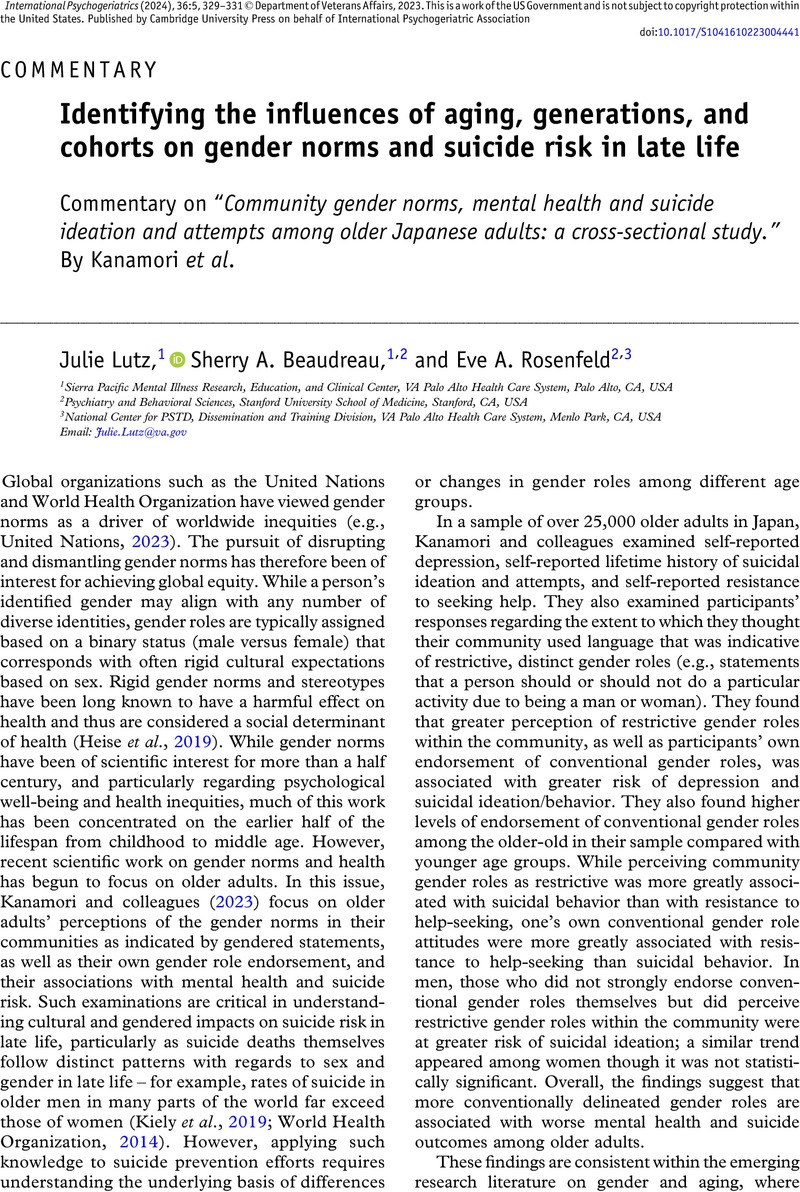No CrossRef data available.
Article contents
Identifying the influences of aging, generations, and cohorts on gender norms and suicide risk in late life
Commentary on “Community gender norms, mental health and suicide ideation and attempts among older Japanese adults: a cross-sectional study.” By Kanamori et al.
Published online by Cambridge University Press: 14 December 2023
Abstract

- Type
- Commentary
- Information
- International Psychogeriatrics , Volume 36 , Special Issue 5: Issue Theme: Suicide in Older Adults , May 2024 , pp. 329 - 331
- Copyright
- © Department of Veterans Affairs, 2023. This is a work of the US Government and is not subject to copyright protection within the United States. Published by Cambridge University Press on behalf of International Psychogeriatric Association


